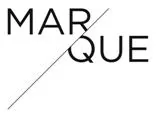Directors of Australian companies often use technology such as teleconferencing to hold board meetings where not all the directors can be in one place (hey, directors need holidays too!) and may view board minutes as a mere formality once a decision has been made. However, aspects of the longrunning James Hardie litigation provide a reminder of the dangers of not dotting the i's.
What happened?
In 2001, the board of James Hardie Industries Ltd held a meeting which approved a draft ASX announcement; that announcement was subsequently found to be misleading. It only took ASIC six years to issue proceedings against the five Australian and two US directors.
One issue was that the US directors had participated in the board meeting by telephone and hadn't seen the draft ASX announcement. The court held that the US directors breached their statutory duties of care and diligence by failing to a request a copy of the announcement or abstaining from voting when they knew that the meeting was being asked to approve the announcement. They were each fined $20k and disqualified from managing corporations for 23 months.
What can we learn?
- If you are conducting a board meeting using video-conferencing or some other technology, each director must be able to participate, hear and be heard for the entire duration of the meeting.
- As a director, you must make sure you request a copy of all documents being considered or tabled at the meeting and if you do not have a copy of all necessary documents you should abstain from voting. The onus is on you as a director to request a copy of the necessary documents and if this is not feasible, ask the Chair to have the text read out (that will make for a really fun meeting).
- The individual will of each director should be made known in a clearly communicated way and this should be reflected in the minutes. If a director votes "no" or abstains, the minutes should set this out, rather than simply stating whether the resolution was approved or not.
- Ensure that draft minutes are reviewed within 1 month of the meeting and corrected as necessary. Again, each director should see this as their responsibility, rather than leaving it to the secretary or Chair.
There's an old saying that whoever drafts the minutes determines the truth. As a director, you need to make sure that the minutes are a true record, and particularly that, if you have voted against a resolution, the minutes say so.
We do not disclaim anything about this article. We're quite proud of it really.

